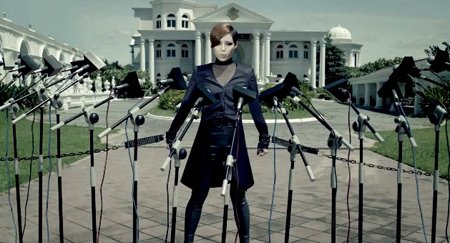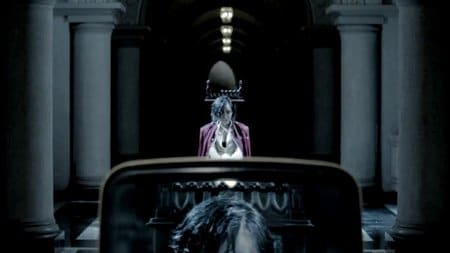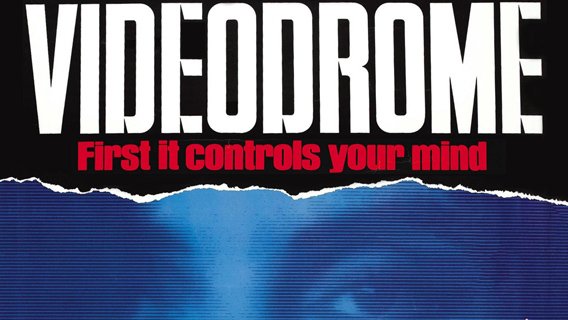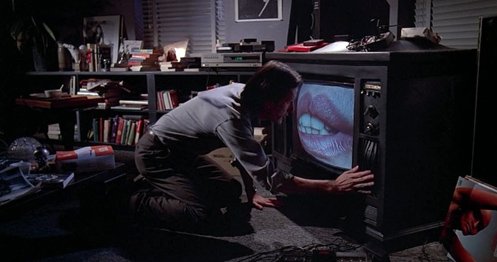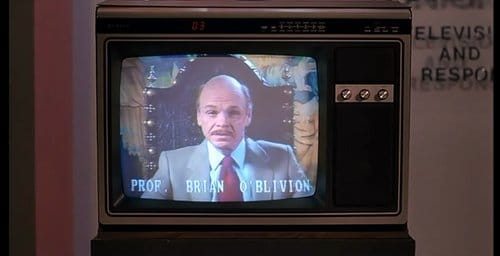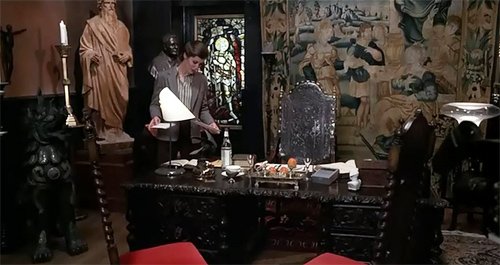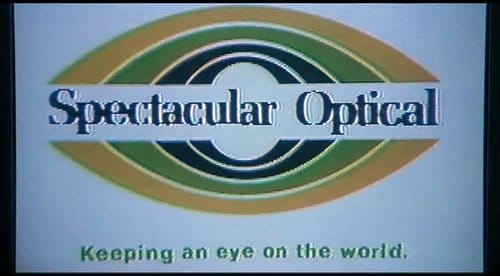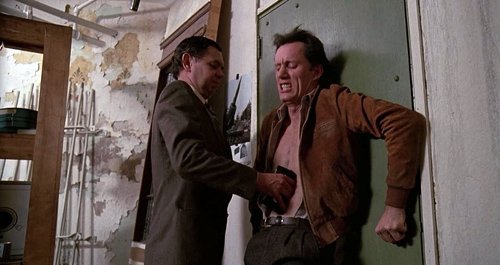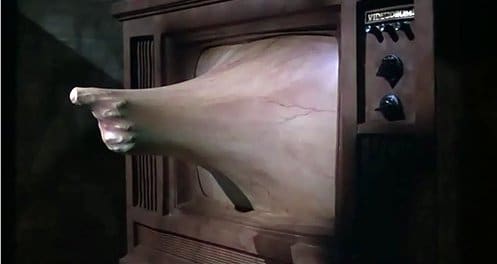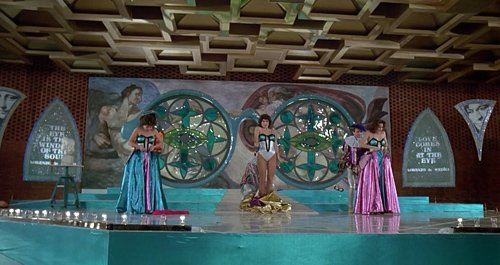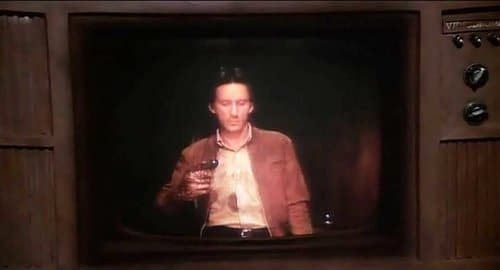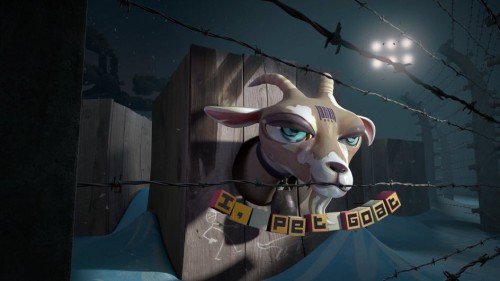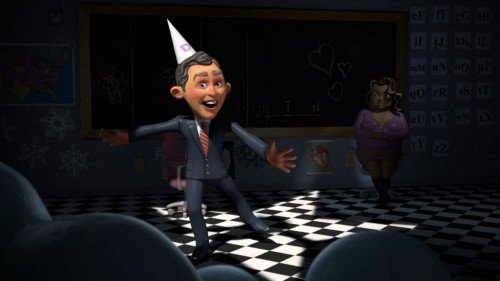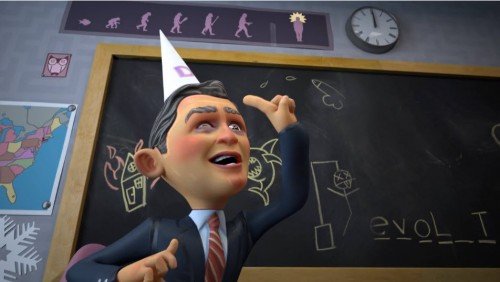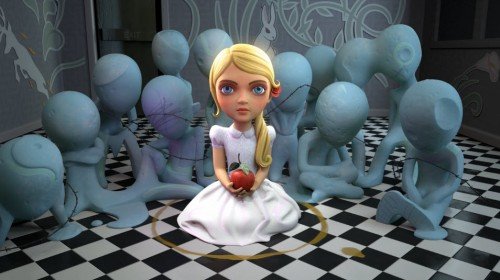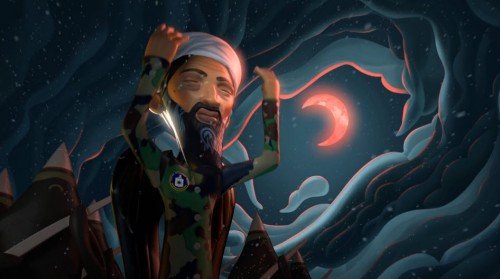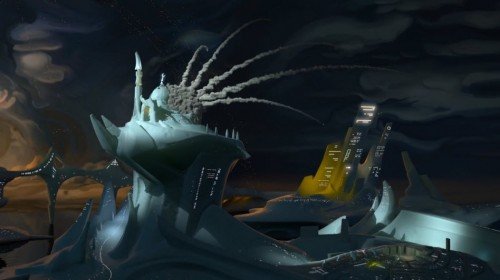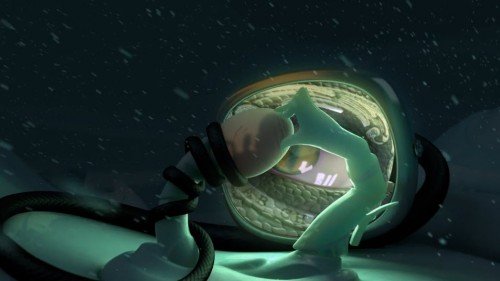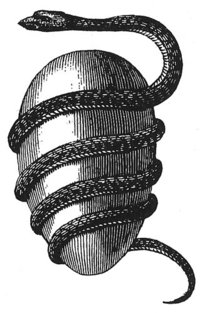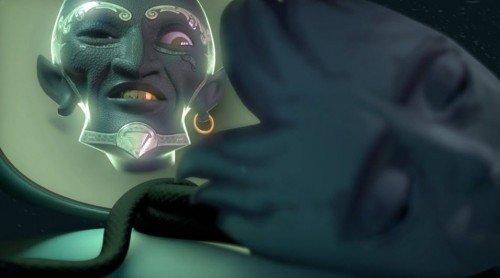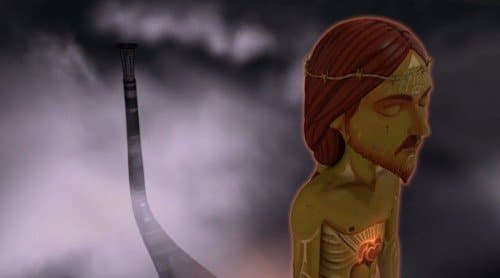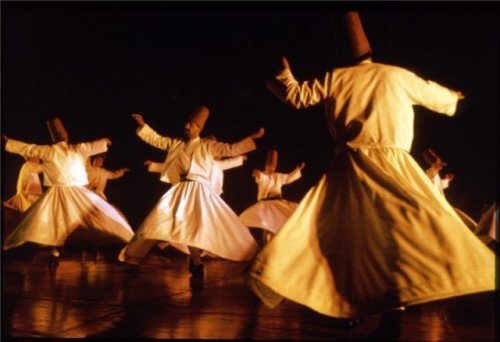Brown Eyed Girls’ Video “Sixth Sense” or How the Elite Controls Opposition
By VC | October 23rd, 2011 |
Backed by big money and millions of fans, the Korean pop music industry (K-Pop) has taken over the airwaves of Asia and the world. Although groups such as Brown Eyed Girls do not sing in English, they definitely bring to the masses the same Illuminati symbolism pushed by pop stars in the Western world. The video of “Sixth Sense” is a true manifesto of the elite, describing how it controls entertainers and uses them to indoctrinate the masses. This article analyzes the meaning of the symbolism in Brown Eyed Girls’ music video “Sixth Sense”.
In last year’s article Narsha and SHINee: Illuminati Infiltration of K-Pop, I looked into the symbolism of two popular K-Pop videos and how they fit in the global Illuminati agenda. Since then, Korean pop has only gotten bigger as record labels like NegaNetwork and SM Entertainment churn out new boy and girl bands at a hectic pace. These labels are almost “pop music sweatshops” as scandals have arisen regarding the mistreatment of K-Pop stars and the signing of “slave contracts”. These labels are, in turn, owned and controlled by the same elite global media corporation who own American and British labels and pop stars. In this context, is it surprising that K-Pop videos show its stars tied down and submitting to a totalitarian power?
The video of Sixth Sense from the very popular girl band Brown Eyed Girls, could not better portray the elite’s control on media and entertainment. More than simply displaying Illuminati symbolism, the video presents the blueprint of how popular figures can be used to communicate a specific message using sex and music as an incentive. Each one of the group’s members are shown in a different position of submission, each representing the different ways the elite controls entertainers to serve its interests. While Myrio, Narsha, Ga-In and Jea appear to be rebelling against an authoritative police state, they are, at the end of the day, controlled opposition, serving in the elite’s Hegelian dialectic. Yes, all of these complex concepts are found in a K-Pop video intended for children and teenagers. Are they being warned or indoctrinated by the message of the video? Let’s look at the symbolism of the video and the messages it communicates to the viewers.
The Premise of Sixth Sense
The video takes place in the context of a totalitarian police state, where media is tightly controlled and people are tightly monitored.
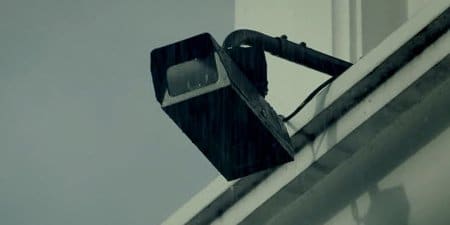
The video begins showing police in riot gear and video cameras, setting it in a Big-Brotherish police state.
The regime is controlled by a masked figured named “the Absolute” (according to an interview with the lyricist of the group), who could easily be associated with the “masked” occult elite.
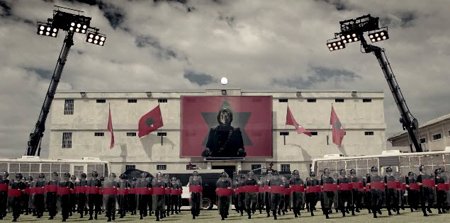
The Absolute looking over its army of riot police. Yet another music video getting young people used to the idea of an oppressive police state.
There appears to be some resistance to the Absolute’s regime, namely Brown Eyed Girls. They are shown standing in defiance of the riot police and appear to be taking a stance against the oppression of the Absolute. As an ultimate gesture of defiance, the group starts singing. Do they sing about freedom and liberation? Are they singing out what is on everyone’s mind? No, not really. The listeners are treated to the same pseudo-sexual drivel all pop songs numbs our brains with. Here’s a translation of the first verse:
Your thirsty face starts sweating
And your flesh is on the tip of my sharp fingersThe bubble in champagne
Explodes, good pain
No need to worry, love is just a game
What does this have to do with resistance? Not much. In fact, the song is about the exact opposite: Not resisting but giving in to the “Sixth Sense”. Are B.E.G. truly in opposition to the riot police or are they in fact on their side? The six-pointed star on the police uniforms represent the “Sixth Sense” so it would seem both sides are about the same thing.
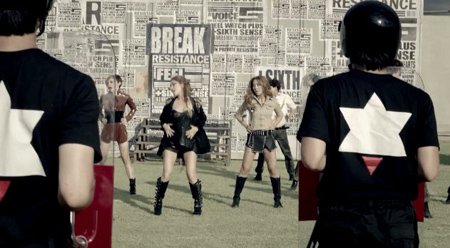
The riot police wears a star with its lowest point red, symbolizing the sixth sense. In occult symbolism, upside down triangles represents the vulva, the feminine energy and reproduction.
What exactly is the “Sixth Sense”? Judging by the lyrics of the song and the symbolism of the video, it is sexual energy – the most basic and primal of human instincts. It is the easiest way to capture and keep the attention of an audience and is used ad-nauseam in pop music to generate interest in otherwise insipid songs. Pretty girls can make things such as a fascist police-state cool. On an esoteric level, reproductive organs are part of the base chakra, which can explain why it is associated in the video with the lowest point of the sixth-pointed star. While the five other senses send information to the brain to be processed and analyzed, the carnal impulse in humans bypasses all of that and directly taps into our primal urges. For this reason, sexuality can be (successfully) used to sell anything, including music videos.

At the start of the song, Ga-In immediately points towards her "upside down triangle", singing "Touch Touch". I guess that's all there need to be known about the Sixth Sense.
B.E.G. is therefore singing about how great the Sixth Sense is, in front of riot police wearing a symbol representing the Sixth Sense. Are they really on the same side? It is still early to say, however the video goes on to show the backstory of each of the group’s members. In the video’s narrative, they each have been used by the Absolute in a different way, each of them representing a facet of Illuminati control in the entertainment business.
Facets of Illuminati Control
During the video, each member of B.E.G. is shown in a different setting, yet in a similar situation: They are all controlled and monitored by the Absolute and forced to play a role in the advancement of its Agenda. The character played by each member represents a facet of Illuminati control in the entertainment business.
Miryo is shown standing in front of the luxurious palace of the Absolute. She is therefore “owned” by him and speaks for him (the double “S” on the palace stands for Sixth Sense). Miryo appears to be strong and confident but, upon closer look, we realized that she is actually tied down. She is forced to speak into microphones (representing the media) to transmit the message of the Absolute. This image represents the fact that artists are used as mouthpieces by the elite, who utilize their popularity and charisma to deliver messages. When Miryo signed that record contract to become a professional singer, she indeed became the property of the elite.
Narsha’s character is very animalistic, sensually crawling around on four legs like a cat. She is wearing leopard-print shorts, which, as readers of this site know, represents Kitten/beta programming in mind control symbolism (see the article entitled Origins and Techniques of Monarch Mind Control for more information regarding Mind Control). She is also surrounded by animal cages, which represent the dehumanization and captivity of mind control slaves at the hands of their handlers. Actual MK slaves are said to be often held in animal cages to cause trauma. Despite her forced state, Narsha appears to enjoy being watched, which is how Beta Kittens are programmed to act.
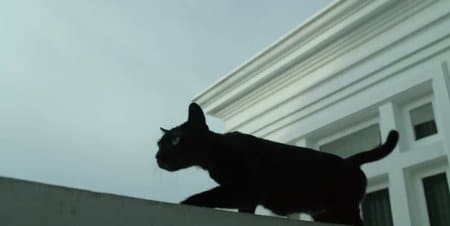
Narsha is shown in juxtaposition with a cat walking around the elite's palace, furthering the association with Kitten programming.
In an interview, the lyricist of the group Kim Eana explains Narsha’s role:
“Narsha represents the ‘sixth sense’ in itself, and embodies the animalistic lyrics in the song (such as “The tips of my sharp nails become embedded into your skin”). Since there is a recurring ‘jungle cat’ theme, Narsha was directed to act as wildly as possibly for the video. The lights inside the cages are flashlights, a symbol of constantly being watched and observed. What’s interesting about her character is that although she looks afraid of it, she also seems to enjoy being observed.”
At first glance, the scene featuring Jea appears to be somewhat poetic, with her floating in water and whatnot. On closer look, we realize that she is tied up to the piece of wood and is left there to die, in a matter vaguely similar to Christ tied up to the cross. We also realize that this is taking place in the pool of the elite’s palace. In other words, they placed her there to sacrifice her.
Jea therefore represents the ritual sacrifices of the occult elite. More than being simple employees, public figures that are part of the Illuminati industry sometimes become unwilling parts of Illuminati rituals. The lyricist of the group confirms that
“Jea represents the image of sacrifice. She’s tied to tree branches, an idea derived from religion. Although the scene looks beautiful from afar, the viewer is able to see that Jea is being pressed down and chained.”
- Kim Eana
Ga-In’s character appears to have been beaten and humiliated by the Absolute’s regime as a result of being a traitor. She is now tied to a chair, between Masonic pillars and is being filmed by a camera. She is the “example”, showing to others what happens to those who attempt to go against the Absolute.
The Uprising
At one point, all of this singing and dancing apparently gets everyone riled up and ready to start a revolution. The members of B.E.G., who were shown above to be restrained and monitored, become aggressive and rebellious (although they never truly free themselves). The riot police feeds from this energy and become rebellious too. They are shown questioning themselves as they remove their helmets to reveal their faces. These soldiers are not simple pawns, they are young men with emotions and stuff. They turn against their ruler and rush towards him as water cannons protect the palace.
At that point, the mask of the Absolute is shown thrown on the ground.

The golden mask, representing the hidden, faceless elite is shown on the ground, leading the viewers to think that the revolt was a success.
The scene then reverts to reality and shows again the riot police about to rush B.E.G.
The rebellion incited by the girls was one big fantasy dreamt up by B.E.G. and the army. They are now back to the cold, hard reality: You cannot fight the Absolute.
Meaning of the Video
Under the guise of entertainment, the video of Sixth Sense gives its viewers a rather harsh lesson in power and politics. A basic analysis of the story, answering simple questions such as “who won the battle?” and “what’s the moral of the story?”, reveals that the elite won and that resistance is useless. In fact, there never was any actual resistance as B.E.G. were manipulated by the Absolute all along. The uprising was nothing but a mere illusion, proving to the viewers that they can be lead to believe anything they see.
Presented as heroes of the people, B.E.G. is shown to be inciting a riot and being agents of liberation. The only thing they however truly accomplished is a mere distraction, a temporary escape to a world filled with brave and determined people, ready to fight for freedom. This is what mass media accomplishes on a daily basis: Putting in the spotlight artists who are, in appearance, rebellious and uncompromising, yet following their messages is exactly what the elite wants the masses to do. In communication-theory terms, the viewers are subjected to a Hegelian dialectic, where a thesis and anti-thesis are proposed, but engaging in either one of them ultimately advances the agenda of the elite. In other words, it is one big circular mind-screw. Here’s a little description of how it works:
“For the elite of his day, and for the monetary elite today, the Hegelian dialectic provides tools for the manipulation of society.To move the public from point A to point B, one need only find a spokesperson for a certain argument and position him or her as an authority. That person represents Goalpost One. Another spokesperson is positioned on the other side of the argument, to represent Goalpost Two.Argument A and B can then be used to manipulate a given social discussion. If one wishes, for instance, to promote Idea C, one merely needs to promote the arguments of Goalpost One (that tend to promote Idea C) more effectively than the arguments of Goalpost Two. This forces a slippage of Goalpost Two’s position. Thus both Goalpost One and Goalpost Two advance downfield toward Idea C. Eventually, Goalpost Two occupies Goalpost One’s original position. The “anti-C” argument now occupies the pro-C position. In this manner whole social conversations are shifted from, say, a debate over market freedom vs. socialism to a debate about the degree of socialism that is desirable.The Hegelian dialectic is a powerful technique for influencing the conversations of cultures and nations, especially if one already controls (owns) much of the important media in which the arguments take place. One can then, as the monetary elite characteristically do, emphasize one argument at the expense of the other, effectively shifting the positions of Goalposts One and Two.”
- Daily Bell, Hegelian Dialectic
Pop stars often play the role of “Goalpost Two” in entertainment videos, but the blatant symbolism of these videos show that they are truly working for the hidden rulers.
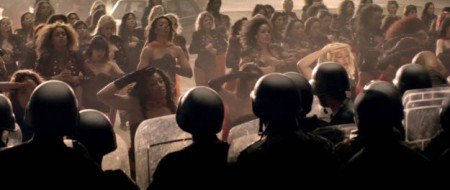
The final scene from Beyonce's "Run the World (Girls)", saluting the riot police. While, at first, Beyonce appears to be leading a resistance or a liberation movement, this final scene tells the viewers that, regardless what they just saw, she still obeys the orders of the powers that be. Like Sixth Sense, this video also emphasizes the power of sexuality to control the masses with lyrics such as "My persuasion can build a nation/ Endless power, the love we can devour/ You'll do anything for me."
Although the four members of B.E.G. were shown to be somewhat rebellious, the core of their message was, at the end, exactly what the elite wanted to communicate. The concept of Sixth Sense appeals to the shutting down of intellectual and cognitive functions to “surrender” to the mesmerizing effect of lust in mass media. It is during this somewhat hypnotized and slightly aroused state that messages can effectively reach the viewer’s brains with maximum effectiveness.
In Conclusion
By analyzing the political message of Sixth Sense, one forgets that this video is primarily aimed at children and teenagers. While listening to the music and admiring their idols’ dancing, the viewers are exposed to a powerful lesson that sticks in the subconscious mind: Resistance is futile. Even worse, resistance does not even exist as those who appear to be resisting are just leading you towards the elite’s goal. These kinds of propaganda videos existed under dictatorships, but today they are passed around as “entertainment”. They get massive airplay on MTV and millions of hits on YouTube. In reality, nobody is forced to watch these videos, but they are nevertheless quite popular. Is there a reason why people willingly subject themselves to this kind of elite propaganda? Yes. These videos appeal to their Sixth Sense … and people like that.




